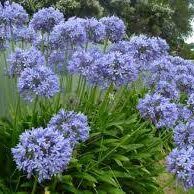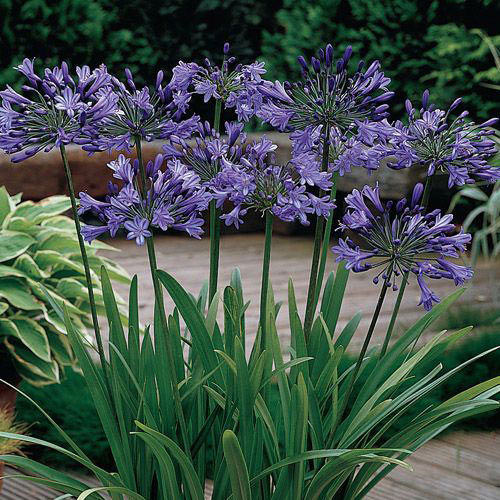Growing Agapanthus: A Total Guide to Beautiful Blooms
Growing Agapanthus: A Total Guide to Beautiful Blooms
Blog Article
Unleashing the Secret to Successful Agapanthus Farming: Idea for a Flourishing Yard
In the world of horticulture, growing agapanthus successfully requires a critical approach that includes various aspects of plant care. With careful attention to information, one can unlock the secrets to nurturing these magnificent flowers, bring about a garden that flourishes with beauty and vibrancy. By recognizing the subtleties of agapanthus growing, one can create an environment where these plants flourish and flower generously. In the adhering to discussion, we will certainly check out vital tips and techniques that will certainly assist you towards a prospering agapanthus garden, supplying insights right into finest techniques, dirt problems, sprinkling strategies, and extra.
Planting Agapanthus: Best Practices
When growing Agapanthus, appropriate soil prep work is vital for ensuring successful development and advancement of these gorgeous blossoms. Agapanthus, commonly called Lily of the Nile or African lily, flourishes in well-draining dirt with a somewhat acidic to neutral pH level - Agapanthus. Prior to growing, it is essential to change hefty clay soils with raw material such as compost or peat moss to enhance water drainage and supply necessary nutrients for the plants
To plant Agapanthus, select a location that receives full sunshine to partial shade, as this will promote healthy growth and abundant flowering. Dig a hole two times the diameter of the plant's origin ball and put the Agapanthus at the very same depth it was formerly expanding. Delicately backfill the hole with dirt, pushing down securely to get rid of any type of air pockets around the roots.
Water the newly grown Agapanthus completely and remain to keep the soil equally moist, particularly throughout the plant's energetic expanding period. Agapanthus. Applying a balanced fertilizer once a month can additionally support the plant's growth and blooming. By following these ideal techniques for planting Agapanthus, you can create a magnificent display of these captivating blossoms in your yard
Ideal Dirt Conditions for Agapanthus
For optimal development and blooming success of Agapanthus plants, ensuring the dirt conditions are ideal is crucial. Agapanthus thrives in well-draining soil with a somewhat acidic to neutral pH level varying from 6.0 to 7.0. This kind of dirt enables adequate water drainage, stopping waterlogging which can result in root rot. To enhance dirt water drainage, consider including raw material such as garden compost or peat moss when preparing the growing website. Additionally, Agapanthus favors soil that is abundant in nutrients, so incorporating a balanced plant food throughout the growing season can advertise healthy and balanced growth and vibrant blooms.

Watering and Fertilizing Tips
To make certain healthy growth and lively flowers, proper watering and feeding strategies are important for effective Agapanthus cultivation. Agapanthus plants gain from normal watering, specifically throughout the growing season. It is recommended to water deeply once a week, ensuring the soil is moist yet not waterlogged. Throughout heat or in pots, even more frequent watering may be required to avoid the soil from drying out totally.
When it pertains to feeding Agapanthus, a well balanced plant food with equivalent parts nitrogen, phosphorus, and potassium can be used in the springtime to promote healthy and balanced development and flowering. Slow-release fertilizers are suitable for offering nutrients slowly over a prolonged period. Avoid over-fertilizing, as this can bring about extreme vegetation development at the cost of blooms.
In addition, including organic matter like garden compost right into the soil can boost nutrient degrees and enhance dirt framework, helping in the overall wellness of the Agapanthus plants. By following these watering and fertilizing ideas, gardeners can guarantee their Agapanthus plants grow and produce spectacular screens of blossoms.
Trimming and Deadheading Methods
Proper trimming and deadheading techniques play an important duty in preserving the health and wellness and aesthetic appeals of Agapanthus plants, complementing the crucial techniques of watering and fertilizing click to read for effective farming. Pruning Agapanthus includes eliminating spent blossom heads, yellowing or dead leaves, and total shaping of the plant to promote better growth. Deadheading, the procedure of removing discolored blossoms, not just enhances the plant's look but also encourages more flowering.
When deadheading Agapanthus, it is recommended to clip off the blossom stem at the base using sharp, clean shears. This procedure reroutes the plant's energy from seed production back right into origin and foliage development, promoting a healthier and more robust plant. Normal deadheading can extend the blooming period of Agapanthus and protect against self-seeding, which can lead to congestion.
In regards to trimming, Agapanthus typically gain from a light trim after blooming to clean up the plant and urge fresh development. Reducing the invested flower stems and getting rid of any type of broken or dead vegetation aids preserve the plant's vitality and general appearance. Nevertheless, it is necessary to prevent cutting into the crown of the plant, as this can weaken its health.

Protecting Agapanthus From Pests and Diseases
Implementing reliable parasite and disease monitoring techniques is essential to securing the health and wellness and vigor of Agapanthus plants in farming. Agapanthus are Visit Your URL normally durable plants, these details yet they can still come down with different insects and illness otherwise correctly looked after. One common bug that influences Agapanthus is the Agapanthus borer, a caterpillar that passages into the plant, triggering damages to the leaves and blossoms. To stop invasions, normal inspection of the plants is necessary. If borers are discovered, they can be manually eliminated, or insecticidal soap can be used as a control step.
In addition to pests, Agapanthus are prone to diseases such as origin rot and fungal leaf spots. By remaining alert and addressing bug and disease issues quickly, garden enthusiasts can help their Agapanthus flourish and thrive.

Verdict
Finally, successful cultivation of agapanthus calls for correct growing strategies, optimal soil problems, sufficient watering and feeding, normal trimming and deadheading, and protection from diseases and pests. By adhering to these tricks and pointers, gardeners can ensure a growing yard loaded with stunning agapanthus blooms. Agapanthus. Remember to keep consistent treatment and focus to detail to promote the health and longevity of these spectacular plants
When planting Agapanthus, appropriate dirt prep work is important for making sure effective development and development of these gorgeous flowers.Water the freshly planted Agapanthus completely and proceed to keep the dirt evenly damp, particularly throughout the plant's energetic growing season.For ideal growth and growing success of Agapanthus plants, guaranteeing the soil conditions are perfect is critical. When planting or hair transplanting Agapanthus, make sure the soil is well-prepared to offer the essential structure for the plants to develop themselves successfully. One common pest that impacts Agapanthus is the Agapanthus borer, a caterpillar that passages into the plant, triggering damage to the leaves and blossoms.
Report this page